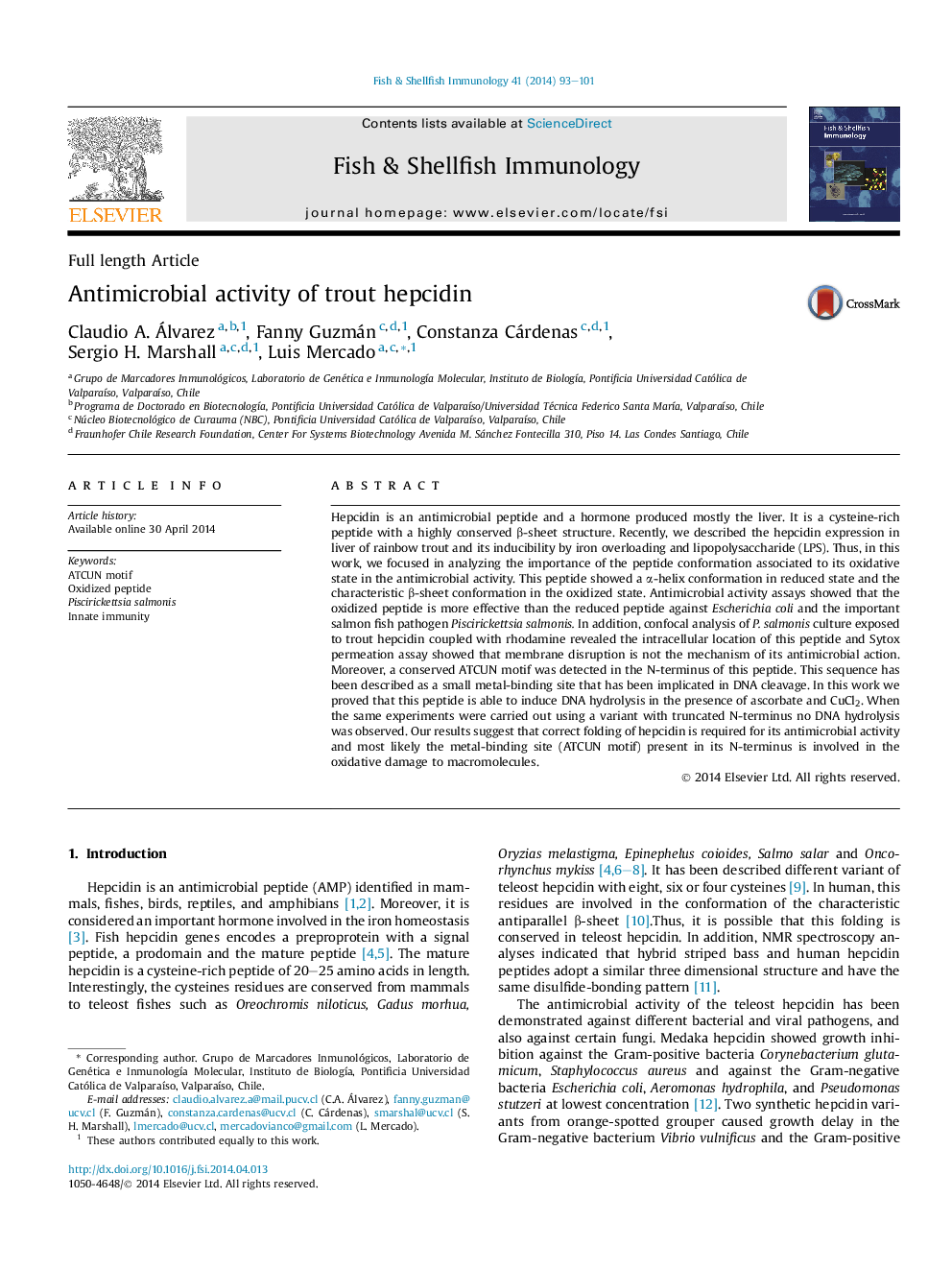| کد مقاله | کد نشریه | سال انتشار | مقاله انگلیسی | نسخه تمام متن |
|---|---|---|---|---|
| 2431308 | 1106751 | 2014 | 9 صفحه PDF | دانلود رایگان |
• We demonstrated the presence of an ATCUN motif in the N-terminus of trout hepcidin.
• Synthetic trout hepcidin showed antimicrobial activity against Piscirickettsia salmonis.
• MIC analysis revealed that the oxidized peptides showed the best antimicrobial activity.
• Maybe an intracellular target is the mechanism used by trout hepcidin.
Hepcidin is an antimicrobial peptide and a hormone produced mostly the liver. It is a cysteine-rich peptide with a highly conserved β-sheet structure. Recently, we described the hepcidin expression in liver of rainbow trout and its inducibility by iron overloading and lipopolysaccharide (LPS). Thus, in this work, we focused in analyzing the importance of the peptide conformation associated to its oxidative state in the antimicrobial activity. This peptide showed a α-helix conformation in reduced state and the characteristic β-sheet conformation in the oxidized state. Antimicrobial activity assays showed that the oxidized peptide is more effective than the reduced peptide against Escherichia coli and the important salmon fish pathogen Piscirickettsia salmonis. In addition, confocal analysis of P. salmonis culture exposed to trout hepcidin coupled with rhodamine revealed the intracellular location of this peptide and Sytox permeation assay showed that membrane disruption is not the mechanism of its antimicrobial action. Moreover, a conserved ATCUN motif was detected in the N-terminus of this peptide. This sequence has been described as a small metal-binding site that has been implicated in DNA cleavage. In this work we proved that this peptide is able to induce DNA hydrolysis in the presence of ascorbate and CuCl2. When the same experiments were carried out using a variant with truncated N-terminus no DNA hydrolysis was observed. Our results suggest that correct folding of hepcidin is required for its antimicrobial activity and most likely the metal-binding site (ATCUN motif) present in its N-terminus is involved in the oxidative damage to macromolecules.
Journal: Fish & Shellfish Immunology - Volume 41, Issue 1, November 2014, Pages 93–101
